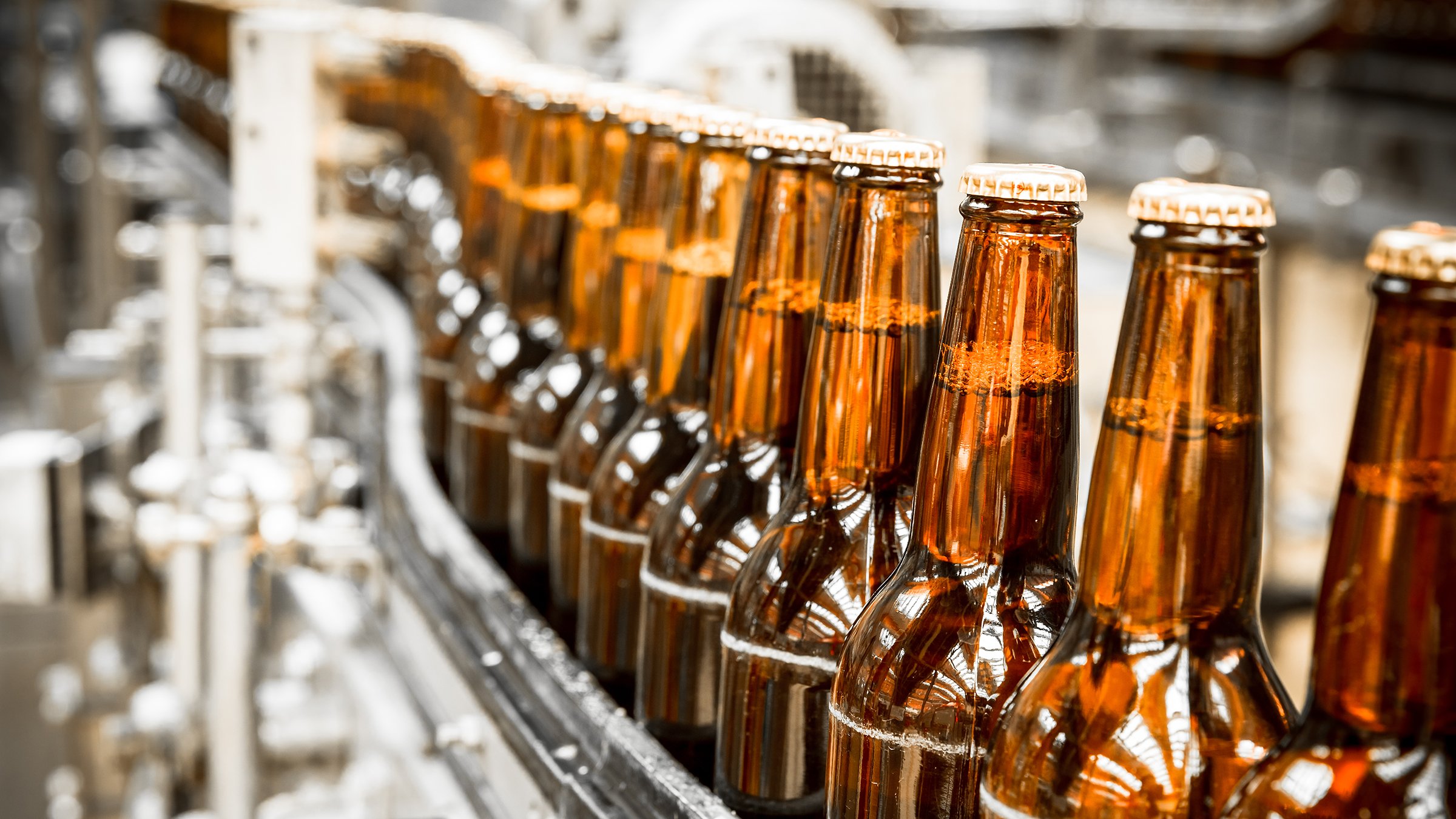Challenge
To analyze strategies to increase pair pallet movement of narrow-aisle cranes.
Solutions
The simulation tool Arena (including the Input and Output Analyzers) was used to perform the simulation study. The main steps of the study are as follows:
- Analysis of the input data
- Design of the model concept
- Development of the simulation model
- Analysis of output data
Results
With Arena, all complex situations could be modeled easily. The results of the simulation study surprised the end user and the main contractor. Although the system design could handle the required throughput of pallets, bottlenecks at different times of the day occurred in unexpected areas.
Background
During the conceptual design stage of a project to install a new AS/RS at the Eichhof Brewery in Luzern, Switzerland, the client, main contractor, and automation equipment supplier decided to use computer simulation as a tool to test the validity of the system design.
The equipment included a complex conveyor system—over 250 meters in length with more than 150 drive units over five levels—dealing with up to 1,800 pallets per day. This, combined with a new AS/RS for storage, covered an area of around 3,900 sq. meters.
The goal of the simulation study was to identify the following:
- Measure the use of individual elements of the system, such as the elevators, rail-guided vehicles, and narrow-aisle cranes
- Identify bottlenecks and highlight integration effects
- Highlight congestion in individual sections of the conveyor system
- Examine breakdown scenarios
- Analyze strategies to increase pair pallet movement of narrow-aisle cranes
Challenge
The goal of the simulation study was to identify the
following:
- Measure the utilization of individual elements of the system, such as the elevators, rail-guided vehicles, and narrow-aisle cranes
- Identify bottlenecks and highlight integration effects
- Highlight congestion in individual sections of the conveyor system
- Examine breakdown scenarios
- Analyze strategies to increase pair pallet movement of narrow-aisle cranes
Solution
The simulation model is broken down into different submodels describing the complete system. In the full case study, figure 2 shows the animation of the core conveyor-elevator system with different levels. From the main level, where the scanner is positioned, the pallets move in pairs via two elevators to the next two levels above, feeding the four pick-up points for the narrow-aisle crane. For each aisle, two pickup and two dropdown stations are placed asymmetrically on each of the levels. Each of the aisles are divided into two sections, each with a narrow-aisle crane and individual unloading and loading stations. After unloading two pallets, the narrowaisle crane has to move vertically to load the next pair of pallets for storage.
Individual animated statistics are placed on the overall layout. These include histograms for the usage of each individual narrow-aisle crane, the number of pallets in the system in different sections, and the congestion level of different conveyor units and rail-guided vehicles.
With Arena, all complex situations could be modeled easily. The results of the simulation study surprised the end user and the main contractor. Although the system design could handle the required throughput of pallets, bottlenecks at different times of the day occurred in unexpected areas.
We simulated breakdowns on one of the four narrowaisle cranes to find out what effect breakdowns would have on the complete conveyor system.
We also studied breakdowns on elevators SF3 or SF4, because they transport all pallets either in the warehouse or from the warehouse.
We did not simulate truck movements and allocation to the bays; we only know the frequency and the number of pallets coming into the system delivered by train, truck, or production. There is no interface to the outside transportation network.
Results
More than 500 simulation runs were carried out with these results:
- The narrow-aisle cranes were underutilized
- The input and output pallets could be processed in the required time span; however, during breakdowns, pallets coming from the production, train, and truck areas should be handled alternately for maximum throughput
- The buffer sections, with a few exceptions, have sufficient capacity
- The rail-guided vehicle QVW2 will be a bottleneck unless a higher velocity can be obtained
- The elevator SF3/4 will be a bottleneck during breakdowns of other units, and breakdown strategies need to be developed
- One I-point (scanner) is sufficient, but strategies for building pallet pairs are necessary
- Elevator SF1 will be a bottleneck if only one pallet can be handled at a time
发布时间 2014年7月31日
Ready to Order Your Software?
Recommended For You
